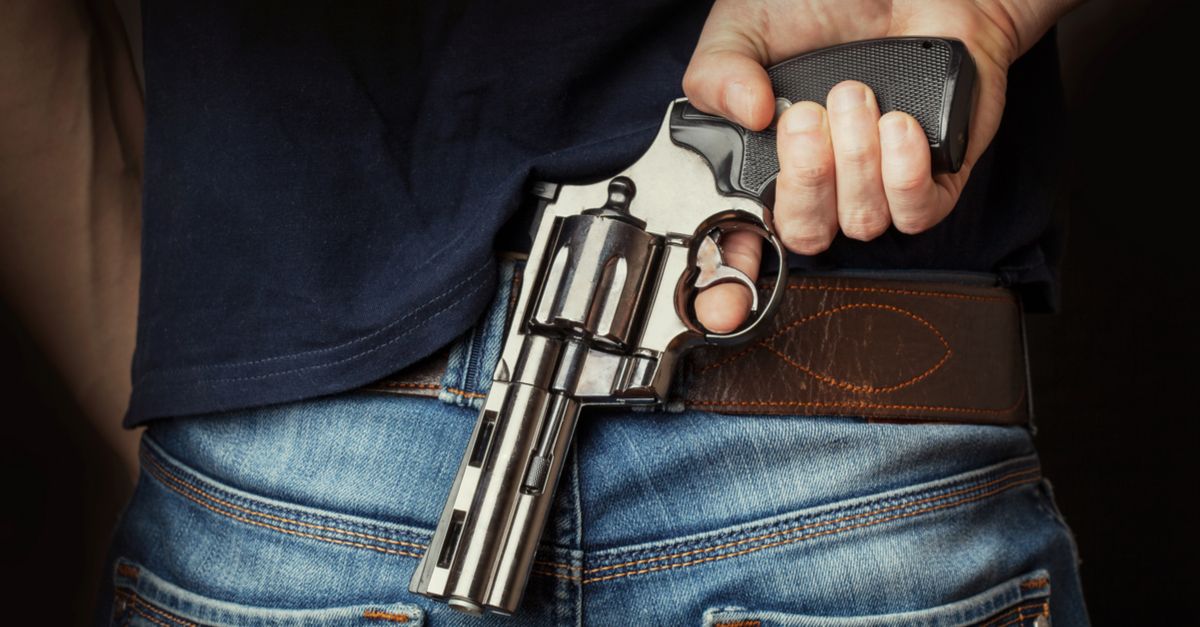The introduction of right-to-carry or laws makes violent crime rates 13-15% worse over 10 years, according to a new working paper by John Donohue, an economist and law professor at Stanford University.
The central finding of the paper, which was published by the National Bureau of Economic Research on 12 June 2017, is that:
Right-to-carry (RTC) laws are associated with higher aggregate violent crime rates, and the size of the deleterious effects that are associated with the passage of RTC laws climbs over time.
Ten years after the adoption of RTC laws, violent crime is estimated to be 13-15% percent higher than it would have been without the RTC law.
Right-to-carry or "shall issue" laws obligate the state to issue a concealed carry permit if the individual meets a set of criteria defined in the law. The applicant does not have to prove that they have a "compelling need" to carry a gun.
Donohue's paper revisits a major 2004 study published by the National Research Council, which found that the data available was not sufficient to draw a definitive conclusion about the effect of "shall issue" laws on violent crime.
However, the June 2017 working paper goes much further. Donohue uses additional statistical models, and analyzes a further 14 years' worth of data, from 2000-2014, during which 11 states introduced right-to-carry laws.
He claims not only a statistical association between right-to-carry laws and increased violent crime, but a causal link.
He uses statistical models to take into account other factors that could have an impact on violent crime rates to estimate what would have happened to those rates in various states if they had not introduced RTC laws when they did:
... [I]t might be the case that some states decided to fight crime by allowing citizens to carry concealed handguns while others decided to hire more police and incarcerate a greater number of convicted criminals.
If police and prisons were more effective in stopping crime, the “no controls” model might show that the crime experience in RTC states was worse than in other states even if this were not a true causal result of the adoption of RTC laws.
As it turns out, though, RTC states not only experienced higher rates of violent crime but they also had larger increases in incarceration and police than other states...RTC states did not have declining rates of incarceration or total police employees after adopting their RTC laws that might explain their relatively bad crime performance.
Donohue estimates a causal link between the introduction of right-to-carry laws and crime rates, but this does not necessarily mean that crime increased in states that implemented such laws. He offers the example of Texas, where crime dropped after the law was brought in in 1996, but argues that it would have dropped even further had the law not been introduced.
...Texas experienced a 19.7 percent decrease in its aggregate violent crime rate in the ten years following its RTC law (between 1996 and 2006), while the state’s synthetic control [what Donohue projects would have happened without the law] experienced a larger 30.8 percent decline.
This counterfactual would not be apparent to residents of the state or to law enforcement officials, but our results suggest that Texas’s RTC law imposed a large social cost on the state.
The paper is likely to be controversial.
In 1998, the economist John Lott published "More Guns, Less Crime," a book based on academic research, which argued that the introduction of laws allowing the concealed carrying of handguns was associated with decreases in violent crime.
The book - which was updated in 2000 and 2010 - has proven controversial, but has been highly influential among gun rights advocates, and formed a central part of the wider policy debate over gun control and violent crime, in the intervening years.
